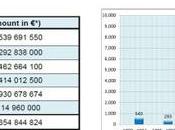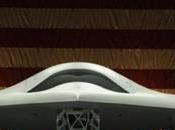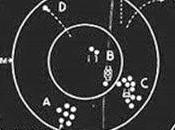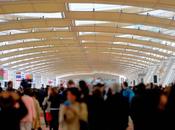
L'Aérospatiale BAC Concorde
Immaginate un futuro in cui i velivoli dell'aviazione civile siano tutti supersonici. Le nostre città, in quel futuro prossimo, sarebbero tormentate dai bang sonici prodotti dagli aerei in accelerazione appena decollati. Se oggi il bang sonico induce alla curiosità, un giorno potrebbe essere un elemento particolarmente fastidioso della quotidianità. Il Concorde soffriva di questa problematica tanto che, se non ricordo male, il velivolo era autorizzato a superare Mach 1 solo quando si fosse trovato lontano dai centri abitati, e a una determinata quota di volo.
Un Burgess Donne D8
Si tratta di un problema notevole... e difatti è sotto esame da parecchio tempo, sin dalla fine della seconda guerra mondiale (e probabilmente non solo per le problematiche civili di cui ho parlato qui sopra). Un ingegnere tedesco di nome Adolf Busemann affrontò il problema sin dai primi anni 50. Fu lui introdurre e a promuovere la soluzione delle Ali a Freccia per ottimizzare il volo durante le velocità transoniche e supersoniche. Fu lui a ipotizzare che la soluzione a biplano avrebbe annullato (o ridotto notevolmente) il fenomeno del bang sonico...E' difficile credere che un biplano possa viaggiare oltre la velocità del suono. La doppia ala provoca una notevole resistenza, e già verso la fine della prima guerra mondiale questo tipo di velivolo veniva sostituito da più moderni mezzi con un solo piano alare proprio per ottenere migliori prestazioni.

Un concept di biplano supersonico creato da Kazuhiro Kusunose alla Tohoku University, in Giappone.
Ma oggi molte cose sono cambiate...Al MIT, ma non solo, si sta studiando un nuovo concetto di ala doppia connessa ai vertici esterni con una sagoma romboidale. Questa struttura dovrebbe consentire ai velivoli di raggiungere velocità supersoniche, di annullare il bang sonico, e addirittura di risparmiare carburante durante il volo, rispetto a un tradizionale velivolo supersonico. Questi nuovi biplani potrebbero risolvere i problemi che hanno decretato il fallimento del progetto Concorde, e rendere più appetibile alle compagnie aeree il volo supersonico.
Imagine a future in which civil aviation aircraft are all fighters. Our cities, in the near future, would be tormented by the sonic booms produced by aircraft acceleration just took off from the nearest airport. If today the sonic boom leads to curiosity, it may (one day) be a particularly annoying noise of the everyday life. The Concorde suffered from this problem so that, if I remember correctly, the aircraft was permitted to exceed Mach 1 speed only when it was far from cities, and at a given flight altitude.

The Swept wing configuration on
the Boeing B52 Stratofordress
A concept of supersonic biplane created by Kazuhiro Kusunose at Tohoku University, Japan.
But today, many things have changed ... At MIT, but not only, scientists are studying a new concept of double wing structure connected to the outer points, as to draw a rhomboid shape. This should allow the aircraft to reach supersonic speeds, to cancel the sonic boom, and even save fuel during the flight, compared to a conventional supersonic plane. These new biplanes could solve the problems that have made the failure of the Concorde project, and make it more attractive the supersonic flight to airlines company.







